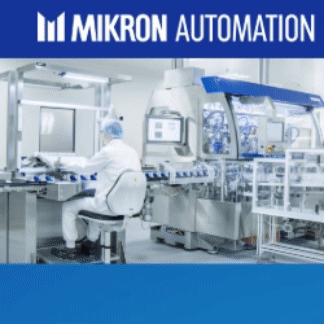Fulcrum Therapeutics Announces Additional HBG mRNA Induction From Higher Dose Cohorts in Phase 1 Healthy Adult Volunteer Trial of FTX-6058 for Sickle Cell Disease & New Preclinical Mechanism Data
Fulcrum Therapeutics, Inc. recently announced positive results from the 20-mg and 30-mg dose cohorts in healthy adult volunteers in its Phase 1 clinical trial of FTX-6058. The company also shared new preclinical mechanism data showing that FTX-6058 downregulated known repressors of fetal hemoglobin (HbF). FTX-6058 is an investigational oral HbF inducer that is being developed for the treatment of sickle cell disease and other hemoglobinopathies, such as beta-thalassemia.
Data from the 20-mg and 30-mg dose cohorts demonstrated a mean 5.6-fold induction and a mean 6.2-fold induction in HBG mRNA, respectively, at day 14. These increases were higher than those observed in the previously reported 2-, 6- and 10-mg dose cohorts. In preclinical studies of FTX-6058, increases in HBG mRNA have consistently translated to the same fold increases in HbF protein. Notably, human genetics show that 2-3-fold increases in HbF are associated with significantly improved outcomes, and even functional cures, in people with sickle cell disease. FTX-6058 has now demonstrated greater than a mean 2-fold induction starting with the 6-mg dose.
“Despite progress in the treatment of sickle cell disease, existing therapies either offer limited benefit or, in the case of gene therapy, are not amenable to the great majority of patients and carry certain risks” said Gerd Blobel, MD, PhD, Frank E. Weise III Endowed Chair in Pediatric Hematology at Children’s Hospital of Philadelphia. “The strategy of increasing the levels of fetal hemoglobin is based on solid genetic and clinical data. It can substantially reduce mortality and morbidity, and in cases where HbF reaches greater than 25%-35% of total hemoglobin, lead to asymptomatic disease. The emerging clinical data on FTX-6058, combined with the new preclinical data showing that it downregulates BCL11A and MYB, two validated HbF repressors, is encouraging.”
“The data for FTX-6058 continue to exceed our expectations,” said Bryan Stuart, Fulcrum’s President and Chief Executive Officer. “We believe the fold increases in HBG mRNA that we have now seen at multiple doses, starting at 6-mg once-daily, have the potential to translate to levels of HbF protein that could provide a functional cure for people with sickle cell disease. Additionally, with the new insights into the mechanism of action, there’s now a clear relationship between FTX-6058 and HbF induction that further affirms our conviction. We remain on track to begin enrolling people with sickle cell disease in our Phase 1b trial by year-end, with an eye toward reporting initial data, including HbF protein levels, in the second quarter of next year.”
The Phase 1 randomized, double-blind, placebo-controlled trial was designed to evaluate the safety, tolerability, and pharmacokinetics (PK) of ascending doses of FTX-6058 (NCT04586985). In the single-ascending dose (SAD) cohorts, healthy volunteers received one dose of either placebo or 2, 4, 10, 20, 30, 40 or 60 mg of FTX-6058. In the multiple-ascending dose (MAD) cohorts, healthy volunteers received a once-daily dose of placebo or 2, 6, 10, 20 or 30 mg of FTX-6058 for 14 consecutive days. Each MAD cohort had six subjects on drug and two on placebo. Food effect was also studied in a separate 20mg dose cohort. Exploratory measures were included in the MAD cohorts to assess target engagement, as well as changes in HBG mRNA and HbF-containing reticulocytes (F-reticulocytes). A 6mg dose cohort in people with sickle cell disease was recently added to this trial to further inform PK and pharmacodynamic modeling for future dose selection. All other cohorts in the trial have been completed, and data from the 2-40-mg SAD cohorts and 2-10-mg MAD cohorts were reported in August 2021.
Consistent with the earlier reported data, FTX-6058 has been generally well-tolerated with no serious adverse events reported to date and there were no discontinuations due to treatment-emergent adverse events (TEAEs) across all SAD and MAD cohorts. Across all cohorts, all TEAEs deemed possibly related to FTX-6058 were mild (Grade 1 or 2) and resolved. There was one Grade 4 TEAE in the 10-mg MAD cohort and one Grade 3 TEAE in the food effect cohort, both of which were determined to be unrelated to FTX-6058. Data continued to show dose-proportional PK, with a mean half-life of approximately 6-7 hours in the MAD cohorts, supporting once-daily dosing, and no food effect was observed with FTX-6058. Data from the MAD cohorts continued to show robust target engagement, as evidenced by an approximately 75%-95% reduction from baseline in H3K27me3 after 14 days of treatment.
The data also showed higher-fold induction of HBG mRNA at the higher doses, with FTX-6058 achieving maximal rate of HBG mRNA induction in the 20mg and 30mg cohorts. Maximal HBG induction has not yet been achieved with the higher doses of FTX-6058. Persistent HBG mRNA induction was observed for 7-10 days after treatment. F-reticulocytes also increased by a mean of 1.8-fold in the 20mg cohort and a mean of 2.4-fold in the 30-mg cohort as of the safety follow up visit, which was seven to 10 days after conclusion of dosing. Increases in F-reticulocytes of any magnitude are a first indicator that HBG mRNA is translating to HbF protein production, which Fulcrum anticipates observing in the Phase 1b trial that will dose people with sickle cell disease for up to 3 months.

Fulcrum also announced new preclinical data demonstrating that FTX-6058 potently downregulated expression of BCL11A and MYB in multiple in vitro and in vivo models, suggesting that FTX-6058 may induce HbF protein production by silencing two validated master regulators of HbF induction. FTX-6058 achieved dose-dependent decreases in BCL11A and MYB expression. Further, FTX-6058’s downregulation of BCL11A was correlated with both HBG mRNA induction and HbF induction, with a 2-3-fold increase in HbF when BCL11A expression was reduced >50%.
Fulcrum is on track to initiate enrollment in the Phase 1b clinical trial of FTX-6058 by the end of 2021, with the aim of establishing early proof of concept in people with sickle cell disease. The open label trial is designed to assess safety, tolerability, PK and PD effects, including HbF protein induction, of up to three doses, starting with a 6 mg once daily dose, to inform dose selection for future development. Each dose cohort will have up to 10 patients who will be treated for up to three months. Fulcrum expects to report initial data from the trial in the second quarter of 2022 and plans to initiate a potentially pivotal Phase 2/3 trial in 2023. Additionally, Fulcrum plans to submit an Investigational New Drug (IND) application with the US FDA by the end of 2021 to support the initiation of a clinical trial of FTX-6058 in additional hemoglobinopathies, including beta-thalassemia. As with sickle cell disease, genetic and clinical data suggest that elevated HbF levels may lead to better outcomes for people with other hemoglobinopathies.
FTX-6058 is a highly potent small molecule inhibitor of Embryonic Ectoderm Development (EED) capable of inducing robust HbF protein expression in cell and murine models. The validation of EED as a target for sickle cell disease and the discovery of FTX-6058 as a novel oral HbF-inducing small molecule were conducted using FulcrumSeek™. Fulcrum is developing FTX-6058 for sickle cell disease and other hemoglobinopathies, including beta-thalassemia.
Sickle cell disease (SCD) is a genetic disorder of the red blood cells caused by a mutation in the HBB gene. This gene encodes a protein that is a key component of hemoglobin, a protein complex whose function is to transport oxygen in the body. The result of the mutation is less efficient oxygen transport and the formation of red blood cells that have a sickle shape. These sickle shaped cells are much less flexible than healthy cells and can block blood vessels or rupture cells. SCD patients typically suffer from serious clinical consequences, which may include anemia, pain, infections, stroke, heart disease, pulmonary hypertension, kidney failure, liver disease and reduced life expectancy.
Fulcrum Therapeutics is a clinical-stage biopharmaceutical company focused on improving the lives of patients with genetically defined rare diseases in areas of high unmet medical need. Fulcrum’s proprietary product engine, FulcrumSeek, identifies drug targets which can modulate gene expression to treat the known root cause of gene mis-expression. The company has advanced losmapimod to Phase 2 clinical development for the treatment of facioscapulohumeral muscular dystrophy (FSHD). Fulcrum has also advanced FTX-6058, a small molecule designed to increase expression of fetal hemoglobin for the treatment of sickle cell disease and beta-thalassemia, into Phase 1 clinical development. For more information, visit www.fulcrumtx.com.
Total Page Views: 722













